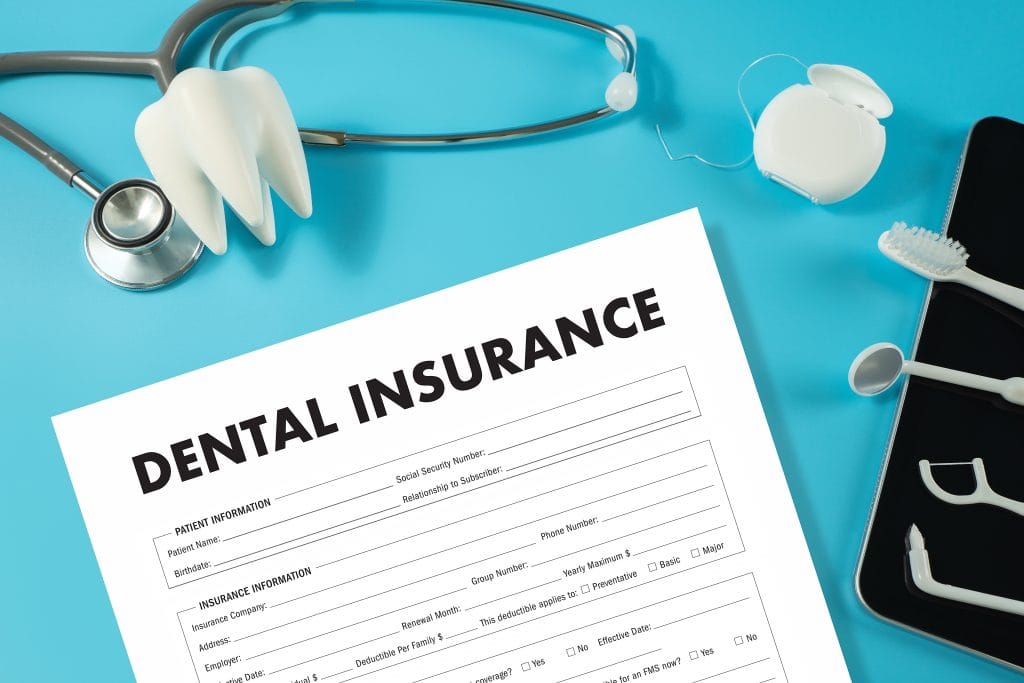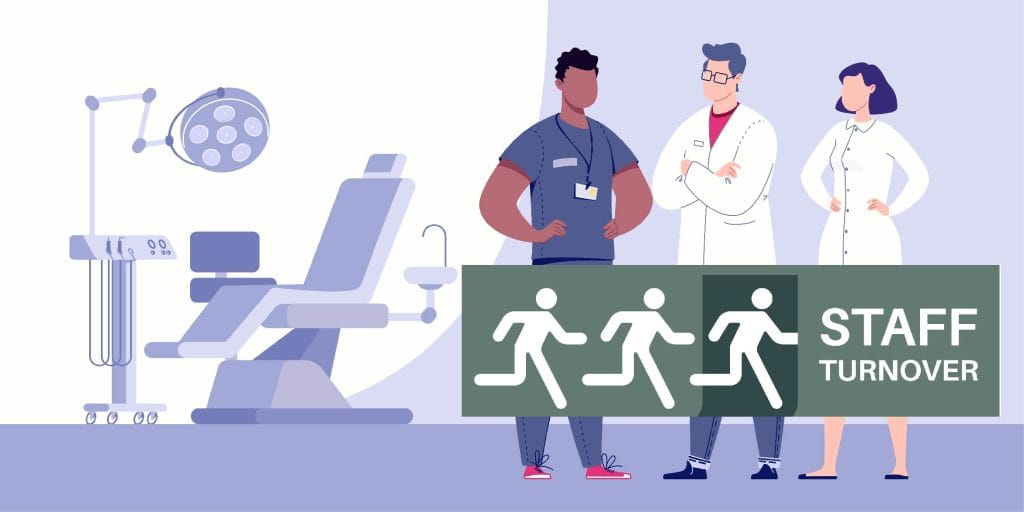Have you ever felt that your payroll is eating up too much of your revenue? Well, you’re not alone. But how high is too high and what should it be?
What Should Payroll Look Like?
I’ll cut to the chase. For U.S. dental practices, your payroll percentage, including employer payroll taxes— should ideally not exceed 22.5% of revenue. Now – important note: This does not include the owner/doctor or associate doctors. It does include EVERYONE ELSE (Office Manager, Treatment Coordinators, Hygienists, front desk, assistants, etc.). For Canadian practices this number is 20.9% NOT including employer taxes, e.g. CPP and Employment Insurance.
So, if you’re collecting $100,000 per month, your payroll (excluding the owner/doc and associates) should not exceed $22,500.
So, where do you stand?
Calculating Your Current Payroll Percentage
Ready to see if you’re on target? Follow these simple steps to get your payroll percentage.
- Calculate a few “Averages” – Use the past three months of revenue and payroll data. For example, let’s say:
- Payroll (less doctor/associates): $37,000 (average)
- Collections: $138,000 (average)
- Run the Math – Divide your average payroll by collections.
- $37,000 ÷ $138,000 = 0.268, or 26.8% (too high)!
In this example, payroll is over by 4.3%—which, when you’re pulling in $138,000 a month, translates to about $72,000 of lost profit per year.
How much SHOULD you be collecting?
 Well, if you find your payroll higher than it should be – here’s a (not so fun) calculation. You can figure out what you SHOULD be collecting if your payroll were not to change.
Well, if you find your payroll higher than it should be – here’s a (not so fun) calculation. You can figure out what you SHOULD be collecting if your payroll were not to change.
So, let’s continue our example above. Payroll is $37,000. What would $37,000 be 22.5% of?
So, (we’ll do this simple), we divide $37,000 by 22.5 = $1644.44 and then multiply it by 100 = $164,444
In this example if our payroll were to STAY at $37,000 we’d need to be collecting $164,444 for our payroll to stay at 22.5%.
This is useful especially when you suspect inefficiency, and various other forms of “under-producing.”
In any event – why might your payroll be too high? Well, here are the top five culprits. And keep in mind it may be a combination of more than one.
Five Common Reasons Your Payroll is too High!
1. Being in-Network
 When your practice relies heavily on reduced-fee plans like PPOs, it’s tempting to think “more volume will make up the difference.” Unfortunately, this often doesn’t add up. Let’s say a crown fee normally sits at $1,400, but under a PPO, you’re reimbursed $800—a $600 hit. So, ultimately who is taking the “hit?” Well, you can’t ask your assistant to write off 40% of their salary while you work on a PPO patient. Lab costs stay the same, your landlord doesn’t cut you a break because you “have too many PPOs” and so on. The only thing taking a hit is your revenue, while your expenses remain steady. The result? Less profit because Payroll and other expense as a percentage balloon.
When your practice relies heavily on reduced-fee plans like PPOs, it’s tempting to think “more volume will make up the difference.” Unfortunately, this often doesn’t add up. Let’s say a crown fee normally sits at $1,400, but under a PPO, you’re reimbursed $800—a $600 hit. So, ultimately who is taking the “hit?” Well, you can’t ask your assistant to write off 40% of their salary while you work on a PPO patient. Lab costs stay the same, your landlord doesn’t cut you a break because you “have too many PPOs” and so on. The only thing taking a hit is your revenue, while your expenses remain steady. The result? Less profit because Payroll and other expense as a percentage balloon.
Managed care creates a vicious cycle of chasing volume without corresponding profit. Imagine that same crown, but at a full fee; you’d have fewer procedures but double the revenue per patient, allowing you to keep payroll as a manageable percentage. If your practice has a high volume of PPO patients. And truthfully if the 21%+ inflation of the past four years (coupled with the tone-deaf response of lowering fees/reimbursements from insurance companies) hasn’t already had you looking for a way out of network – it’s time to start. If you want getting out of plans and creating a fee-for-service practice, we offer a FREE Fees and Plans Analysis to get you on the right track. Click here to find out more!
2. Low Case Acceptance
Case acceptance rate is another factor. Picture this: you’re presenting a $7,200 treatment plan for six crowns, but the patient opts to go with what insurance will cover, limiting treatment to two crowns for $2,400. Here’s a situation where sales skill could have made you (and your practice) an additional $4,800 if the patient accepted full treatment and mind you – with little or no additional time spent by you. And even better it’s a win-win. The patient is healthier, your practice revenue goes up and you find more career satisfaction by doing more comprehensive treatment.
Boosting case acceptance isn’t about pushing patients but helping them understand the necessity of comprehensive care – thereby getting them to WANT it. At MGE, we’ve seen that improving communication alone can significantly increase patient acceptance rates, driving revenue up without additional appointments or effort. Investing in case acceptance training, like the MGE Communication and Sales Seminars, can help maximize each patient interaction and create a consistent revenue base, keeping payroll percentages in check.
3. Paying the Person, Not the Position
When staff have been with the practice for years, incremental raises can inflate payroll over time. For instance, let’s say the standard rate for a receptionist in your area is $20/hour. You’ve had a loyal receptionist for seven years and, through annual raises, they’re now earning $30/hour. While loyalty and experience are important, every role in the office has an economic cap based on its contribution to revenue. Paying above this threshold, without a corresponding boost in responsibilities or performance, makes payroll costs creep up, even if collections don’t.
A useful guideline here is to cap pay increases at a reasonable level unless you’re assigning a promotion or additional duties that justify the bump. Tools like salary.com can provide a low, medium, and high range for each position based on your zip code, keeping payroll aligned with local standards. Incentive programs are also helpful, allowing staff to earn more when the practice performs well while maintaining a stable base salary.
4. Misallocation of Personnel
Think about the balance between clinical and administrative staff. I’ve seen practices where the front desk is understaffed, leading to missed calls, scheduling gaps, and lost opportunities for patient engagement. For example, a practice with three doctors, six hygienists, and only one front desk person simply can’t keep up with the flow. The opposite can also happen, where a practice has an office manager, financial coordinator, receptionist, and scheduler to support just one doctor and assistant.
This kind of imbalance drains productivity. Too few front desk staff will leave doctors waiting and rooms idle. Too many administrative roles for a small clinical team means paying for unneeded hours. Aligning roles to the practice’s current size and volume allows the team to function effectively, maximizing each staff member’s contribution without driving up payroll unnecessarily.
5. Underperforming Staff
Underperformance isn’t always about hiring the wrong person; often, it’s a matter of training and setup. I’ve worked with practices where, despite hiring skilled people, productivity falters due to inadequate training, unclear job roles, or poor onboarding processes. If you have a receptionist who isn’t converting new patient calls, an assistant who can’t keep up with chairside requirements, or a financial coordinator struggling with collections, your payroll as a percentage will spike, even though the issue may be performance-related.
The solution? Invest in structured training. Programs like MGE’s Power Program or DDS Success provide in-depth, role-specific training for everything from scheduling to treatment coordination, getting staff quickly productive. Most employees genuinely want to perform well—around 80%, in my experience—so equipping them with clear expectations and tools for success often makes all the difference. Staff who know exactly what’s expected tend to perform better, which keeps payroll percentages where they should be.
Wrapping Up
If your payroll seems high, these guidelines should help you identify and correct inefficiencies. And if you need a deeper analysis, contact us at MGEonline.com or give us a call at 800-640-1140.




No Comments
Be the first to start a conversation